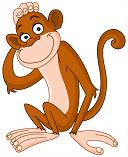| Term first used in 1897 by the French sociologist Émile Durkheim, to describe a condition or malaise in
individuals "in which society provides little moral guidance" and which can lead to suicide |
 |
Anomie |
| Difficulty in learning or comprehending arithmetic (understanding numbers, how to manipulate numbers, etc.) –
the numerical equivalent of dyslexia |
 |
Dyscalculia |
| A female's infatuation with her father – the female equivalent of the Oedipus complex |
 |
Electra complex |
| Slip of the tongue, which may reveal a hidden thought |
 |
Freudian slip |
| Theory proposed 1943 by Abraham Maslow – based on a study of exemplary people |
 |
Hierarchy of Needs |
| James Braid, 1795–1860, was a pioneer of (Braidism is a term once used for) |
 |
Hypnotism |
| The part of the subconscious governed by irrational, instinctive forces |
 |
Id |
| The Stanford–Binet test is a widely–used way of measuring |
 |
Intelligence (IQ) |
| Psychiatric disorder characterised by a compulsive urge to steal |
 |
Kleptomania |
| Term (from the Greek for 'great madness') used in popular culture for narcissistic personality disorder
– a long–term pattern of abnormal behaviour, characterised by exaggerated feelings of self–importance, an excessive need
for admiration, and a lack of understanding of the feelings of other people |
 |
Megalomania |
| Named after an 18th–century fictional character: the medical condition in which a patient feigns or induces
illness, often in someone else such as their child, in order to gain attention or sympathy |
 |
Munchausen syndrome |
| Eating disorder characterised by an obsession with healthy eating |
 |
Orthorexia |
| Phenomenon in which hostages come to empathise with their captors (named after a city where employees of a bank
were held hostage in 1973) |
 |
Stockholm Syndrome |
| Austrian psychiatrist who first described the inferiority complex |
 |
Alfred Adler |
| Inventor of 'lateral thinking' |
 |
Edward de Bono |
| Swiss psychiatrist who popularised the terms introvert and extrovert |
 |
Carl Jung |
| Founder of the Institute for Sex Research at Indiana State University (later named after him) in 1947; author of
Sexual Behaviour in the Human Male (1948) and [ditto] Female (1953) |
 |
Alfred Kinsey |
| Russian physiologist: discovered "conditional reaction" – reaction conditional on the subject's
previous experience – while experimenting on the gastric functions of dogs, around 1900; Nobel prize 1904 |
 |
Ian Pavlov |
| Swiss philosopher, 1896–1980, famous for his work in child psychology |
 |
Jean Piaget |
| Ink blot personality test: developed by and named after (Swiss psychiatrist) |
 |
Hermann Rorschach |
| Technique that assumes the states of parent, adult, and child in each individual |
 |
Transactional analysis |
| Cards with standard symbols (circle, square, star, cross, wavy lines) – used in experiments for extrasensory
perception (ESP), especially clairvoyance – named after the American psychologist who designed them in the early 1930s |
 |
Zener cards |

